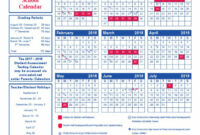Creating Long Articles for SEO: A Guide with a Casual Look at the Santee School District Calendar
To rank well on Google and attract organic traffic, creating long, in-depth articles is a powerful strategy. These articles provide comprehensive information, satisfying user intent and signaling to search engines that your content is valuable and authoritative. Let’s break down what this entails and then take a casual peek at the Santee School District calendar as an example.

Explain: What Do We Mean by Long Articles for SEO?
Long articles, in the context of Search Engine Optimization (SEO), are web-based content pieces that go beyond a typical blog post in terms of word count and depth of information. While there’s no magic number, most SEO experts consider articles with over 1,200 words, and often significantly more (2,000+ words), as long-form content.
Comprehensive Coverage: Longer content allows you to naturally incorporate a wider range of keywords and related terms, helping you rank for more search queries.
What Do You Mean: Deeper Dive into the Concept
When we talk about long articles for SEO, it’s not just about hitting a word count. The content needs to be:
High-Quality: Well-researched, accurate, and engaging.
How: The Process of Creating Long SEO Articles
Creating effective long-form content involves several steps:
1. Keyword Research: Identify the main keywords and related long-tail keywords your target audience is searching for. Tools like Google Keyword Planner, SEMrush, or Ahrefs can be helpful here.
2. Topic Selection: Choose a topic that has enough depth to warrant a long article and aligns with your keyword research.
3. Outline Creation: Develop a detailed outline with main headings and subheadings to structure your article logically. This ensures comprehensive coverage and improves readability.
4. Content Creation: Write the article, focusing on providing valuable information and naturally incorporating your target keywords. Aim for a conversational yet authoritative tone.
5. Optimization: Optimize your title tags, meta descriptions, headings, and image alt text with relevant keywords.
6. Internal and External Linking: Link to other relevant pages on your website (internal links) and to authoritative external sources.
7. Visual Enhancement: Include relevant images, videos, infographics, or other multimedia elements to break up the text and enhance engagement.
8. Readability: Ensure your content is easy to read by using short paragraphs, simple language, and a clear font. Tools like the Flesch-Kincaid readability test can help.
9. Call to Action (Optional): Depending on your goals, include a clear call to action, such as encouraging comments, sharing, or subscribing to a newsletter.
What Is Known: Insights from SEO Best Practices
SEO experts generally agree on the benefits of long-form content:
Higher Rankings: Studies have shown a correlation between longer content and higher rankings in search results.
However, it’s crucial to remember that quality trumps quantity. A long, rambling article filled with fluff won’t perform well. The length should be justified by the depth and value of the information provided.
Solution: Crafting Effective Long-Form Content
The solution to ranking with long articles lies in creating high-quality, comprehensive, and well-optimized content that genuinely addresses the needs and questions of your target audience. Focus on providing value, structuring your content logically, and making it easy to read and digest.
Information: A Casual Look at the Santee School District Calendar
Now, let’s shift gears and take a casual look at the Santee School District calendar as an example of information that might be presented in different formats, including a longer, more comprehensive one.
Imagine someone searching for “Santee School District calendar 2025.” They might be looking for:
Start and end dates of the school year.
A short search result might just show the main dates. However, a longer, more comprehensive article about the Santee School District calendar could include:
A clear overview of the 2024-2025 and potentially the upcoming 2025-2026 academic years. This would explicitly state the key dates. For the 2024-2025 school year, the first day of school was August 21, 2024, Thanksgiving break was from November 25-29, 2024, Winter break was from December 23, 2024 to January 3, 2025, Spring break is from April 7-18, 2025, and the last day of school is June 11, 2025.
By providing this level of detail, an article about the Santee School District calendar becomes a much more valuable resource for parents, students, and staff compared to a simple list of dates. It answers more potential questions and establishes the website as a reliable source of information about the district.
Conclusion
Creating long articles for SEO is a strategic approach to improve your website’s visibility and attract organic traffic. By focusing on in-depth, high-quality content that comprehensively addresses user intent, you can signal to search engines that your website is a valuable resource. Remember that length should always be driven by the need to provide thorough information and value to the reader. Just as a detailed explanation of the Santee School District calendar offers more utility than a basic list of dates, well-crafted long-form content can significantly enhance your SEO efforts and establish your authority in your niche.

![Grand Prairie GPISD School District Calendar - [PDF] - EduCounty](https://calendaron2017.com/wp-content/uploads/2025/05/grand-prairie-gpisd-school-district-calendar-pdf-educounty-200x135.jpg)
